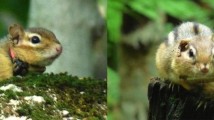
Overview
- This book is open access, which means that you have free and unlimited access
- Introduces standard terminology, procedures, equipment, and analysis tools for animal bioacoustic studies
- Unravels complex concepts, such as sound propagation and discusses common pit-falls
- Points to numerous resources (in print and online) for further in-depth reading
Buy print copy
Tax calculation will be finalised at checkout
About this book
This open-access book empowers its readers to explore the acoustic world of animals. By listening to the sounds of nature, we can study animal behavior, distribution, and demographics; their habitat characteristics and needs; and the effects of noise. Sound recording is an efficient and affordable tool, independent of daylight and weather; and recorders may be left in place for many months at a time, continuously collecting data on animals and their environment. This book builds the skills and knowledge necessary to collect and interpret acoustic data from terrestrial and marine environments. Beginning with a history of sound recording, the chapters provide an overview of off-the-shelf recording equipment and analysis tools (including automated signal detectors and statistical methods); audiometric methods; acoustic terminology, quantities, and units; sound propagation in air and under water; soundscapes of terrestrial and marine habitats; animal acoustic and vibrational communication; echolocation; and the effects of noise. This book will be useful to students and researchers of animal ecology who wish to add acoustics to their toolbox, as well as to environmental managers in industry and government.
Similar content being viewed by others
Keywords
Table of contents (13 chapters)
-
Front Matter
-
Back Matter
Reviews
Editors and Affiliations
About the editors
Christine Erbe holds an M.Sc. degree in Physics (University of Dortmund, Germany) and a Ph.D. in Geophysics (University of British Columbia, Canada). She worked as a Research Scientist at Fisheries and Oceans Canada, was Director of JASCO Applied Sciences Australia, and after a brief stint in high-school education, returned to academia as Director of the Centre for Marine Science and Technology at Curtin University (Perth, WA, Australia). Christine’s interests are underwater sound (biotic, abiotic, and anthropogenic), sound propagation, signal processing, and noise effects on marine fauna. She’s a John Curtin Distinguished Professor, Fellow of the Acoustical Society of America, former Chair of the Animal Bioacoustics Technical Committee of the Acoustical Society of America, and former Chair of the international conference series on The Effects of Noise on Aquatic Life.
Jeanette A. Thomas obtained her Ph.D. in Ecology and Evolutionary Biology from theUniversity of Minnesota (1979) on underwater vocalizations of Weddell seals in the Antarctic. She was Director of the Bioacoustics Laboratory at Hubbs-Sea World Research Institute (San Diego, CA, USA), a Senior Scientist at the Naval Ocean Systems Center (Kailua, HI, USA), and Professor in Biology at Western Illinois University (WIU; Macomb, IL, USA), where she helped established a Master’s degree program in Biology in collaboration with Shedd Aquarium (Chicago, IL, USA). In 2000, she developed the WIU Graduate Certificate in Zoo and Aquarium Studies. Jeanette received several awards through WIU: Distinguished Faculty Lecturer, Outstanding Researcher, and Distinguished Alumni. Jeanette was President of The Society for Marine Mammalogy (1994-1996) and Editor for Aquatic Mammals (2000-2009). Jeanette passed away unexpectedly on 16 July 2018.
Bibliographic Information
Book Title: Exploring Animal Behavior Through Sound: Volume 1
Book Subtitle: Methods
Editors: Christine Erbe, Jeanette A. Thomas
DOI: https://doi.org/10.1007/978-3-030-97540-1
Publisher: Springer Cham
eBook Packages: Biomedical and Life Sciences, Biomedical and Life Sciences (R0)
Copyright Information: Springer Nature Switzerland AG 2022
Hardcover ISBN: 978-3-030-97538-8Published: 04 October 2022
eBook ISBN: 978-3-030-97540-1Published: 03 October 2022
Edition Number: 1
Number of Pages: XVII, 517
Number of Illustrations: 1 b/w illustrations
Topics: Zoology, Acoustics, Ecology, Animal Physiology, Engineering Acoustics, Engineering Acoustics



